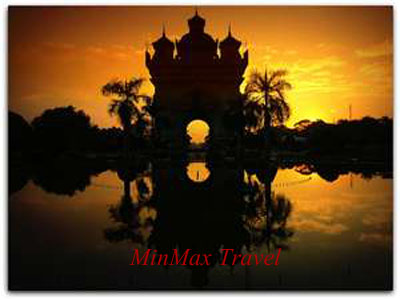Vientiane capital
The capital of Laos is booming. Driven by rising foreign investment, plenty of foreign aid workers and a more urbane youth, change is coming as quickly as in any city in Asia. However, even with all this dynamism you won’t see words like ‘hustle’ and ‘bustle’ being used to describe Vientiane, which can still mount a strong argument for being the most relaxed capital city on earth.
Vientiane means ‘Sandalwood City’, and is actually pronounced Viang Chan (Viang means ‘city’ or ‘place with walls’ in Lao; Chan means sandalwood); the French are responsible for the modern transliteration. The combination of tree-lined boulevards and dozens of temples impart an atmosphere of timelessness, while the kaleidoscopic architectural styles reflect it’s historic influences, from classic Lao through Thai, Chinese, French, US and Soviet.
As Laos continues to open itself to the world, Vientiane is where the struggle between a communist past and inevitably more capitalist future is most dramatically played out. Lao bands sing lyrics censored by the government to dancing youths who’d look at home in any Western bar. The Lao National Museum still has displays glorifying the victory over capitalist foreign imperialists, but across the road another slick restaurant opens in what is becoming one of the best-value dining cities on earth. The contrasts are fascinating.
Of course, Vientiane is not only about witnessing change. The 6400 Buddhas at Wat Si Saket, the religious art of Haw Pha Kaeo, and the lotus-inspired lines of Laos’s gilded national symbol, Pha That Luang, speak of the historical importance of the city. Patuxai and the surreal Xieng Khuan (Buddha Park) may have less artistic merit, but like the city itself, they’re not short of appeal.
Source: lonelyplanet.com

